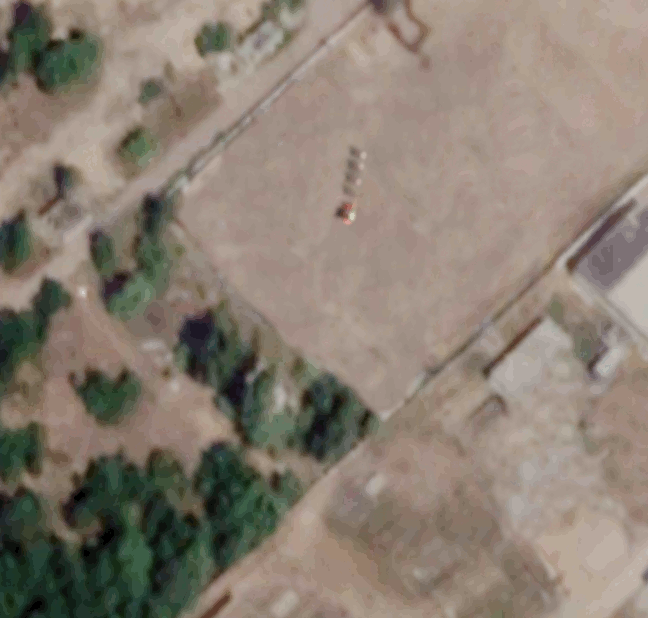TLDR: Seen many real photos of Santa lately? How about bigfoot? Loch Ness monster, anyone? Sophisticated kids these days will be using cameras supercharged with AI to try to detect all sorts of rare and unusual objects, with Santa and his reindeer being the first priority this time of year. Searches for Santa offer a perfect example of why you need synthetic computer vision content when looking for rare and unusual objects.
When you need data, but can’t get real images
At this time of year, millions of children around the world are sharpening their observation skills and concocting plans to keep themselves awake all night with one specific objective in mind, catching Santa Claus in the act on the night of the 24th of December!
The more sophisticated kids are likely to log into their GitHub accounts and start downloading the latest computer vision detection algorithms. There they can find imagery inspection models for everything from counting people to identifying vehicles. The more analytical tots may even want to verify their Christmas morning haul with an algorithm to count packages before they shred all the wrapping.
Unfortunately, finding Santa is a perfect example of a case in which you need data to tune off-the-shelf computer vision models to find specific items that probably weren’t in the model training data. The problem you’ll find is that models are trained on data, the more data the better, and large repositories of photos of the real Santa Claus simply don’t exist.
So what can a frustrated budding data scientist do in these cases? Short of using their parent’s credit card* to book a ticket to Longyearbyen and then making a stealthy trip further north with camera gear, the only thing that a kid can do is to fake it until they make it… with synthetic data.

Looking for training data with annotation and classification masks showing where Santa and his Reindeer are hiding? Rendered.ai can be used to generate synthetic imagery of Santa, reindeer, and crowds of elves!
Rendered.ai makes a platform just for this kind of use case. With Rendered.ai, anyone can combine 2D and 3D content with a variety of rendering and simulation capability to generate virtually unlimited variety of simulated sensor imagery. And you don’t just get imagery, you get annotation and lots of other capability helpful for AI training workflows.
Looking for a red-suited guy in a crowd of elves? You can do that. Scanning the sky for a sled pulled by 8 reindeer? Yep, you can do that, too. Hoping to build a detector for packages with stealth wrapping? We’ve got you covered there.

Looking for presents under a tree? Synthetic data can be generated for a wide variety of room and tree configurations… and camera placement, too.
As demonstrated by Rudolf, most Reindeer can’t see through clouds, so how can you expect your everyday variety of binoculars to help you spot a flying toy dispenser? With Rendered.ai, you can even use technology from our partners to see through clouds with simulated Synthetic Aperture Radar, multispectral imagery, or even to generate training data so that you could X-ray** packages and peek into their contents without disturbing a fold of wrapping.
We’re not quite sure how those folks at NORAD and Cesium are doing all their Santa tracking, but we can’t help but think that they’re doing some of their secondary verification and validation using algorithms trained on synthetic remote sensing data!
-
Read more about how Rendered.ai and RIT DIRS Laboratory helped Planet generate synthetic data for their upcoming Tanager satellites!
How it works
Dylan Harkness, Synthetic Data Engineer at Rendered.ai, explained that he took the following steps to generate synthetic data to help him train algorithms to count presents:
- Using Blender’s Geometry Node system he generated interior scenes with variable floorplans and furniture
- He was able to set up variable configuration for room dimensions, room purpose, floor and wall textures as well as camera angles
- Furniture and presents get annotated with metadata and segmentation masks can be extracted for feature isolation and recognition
- One experiment he was running was to determine what kind of room is depicted in the image by what annotated objects are present, such as microwaves for kitchens or dressers for bedrooms
We’re doing even more to help kids… I mean… customers achieve the right training data for their needs, including exploring the use of Generative AI not just for tasks such as coding assistance but also for generating synthetic imagery as part of an AI Training workflow.
This holiday season, if you’re trying to train algorithms to detect rare and unusual objects flying through the sky and landing on a rooftop near you, consider getting a jump start with synthetic data and save yourself the cold trek to the North Pole.
* We strongly advise kids to check with their parents before borrowing credit cards or booking tickets, lest they’d like to appear on the ‘Naughty List.’
** Ditto on the x-rays. Not recommended for ‘Nice List’ candidates.




